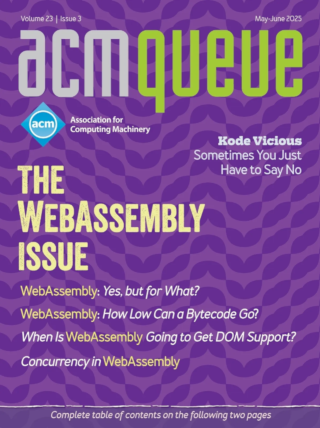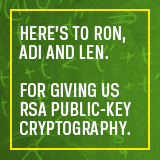
WebAssembly: Yes, but for What?:
The keys to a successful Wasm deployment
WebAssembly (Wasm) has found a niche but not yet filled its habitable space. What is it that makes for a successful deployment? WebAssembly turns 10 this year, but in the words of William Gibson, we are now as ever in the unevenly distributed future. Here, we look at early Wasm wins and losses, identify winning patterns, and extract commonalities between these patterns. From those, we predict the future, suggesting new areas where Wasm will find purchase in the next two to three years.
WebAssembly: How Low Can a Bytecode Go?:
New performance and capabilities
Wasm is still growing with new features to address performance gaps as well as recurring pain points for both languages and embedders. Wasm has a wide set of use cases outside of the web, with applications from cloud/edge computing to embedded and cyber-physical systems, databases, application plug-in systems, and more. With a completely open and rigorous specification, it has unlocked a plethora of exciting new systems that use Wasm to bring programmability large and small. With many languages and many targets, Wasm could one day become the universal execution format for compiled applications.
When Is WebAssembly Going to Get DOM Support?:
Or, how I learned to stop worrying and love glue code
What should be relevant for working software developers is not, "Can I write pure Wasm and have direct access to the DOM while avoiding touching any JavaScript ever?" Instead, the question should be, "Can I build my C#/Go/Python library/app into my website so it runs with good performance?" Nobody is going to want to write that bytecode directly, even if some utilities are added to make it easier to access the DOM. WebAssembly should ideally be an implementation detail that developers don't have to think about. While this isn't quite the case today, the thesis of Wasm is, and must be, that it's okay to have a build step.
Concurrency in WebAssembly:
Experiments in the web and beyond
Mismatches between the interfaces promised to programmers by source languages and the capabilities of the underlying web platform are a constant trap in compiling to Wasm. Even simple examples such as a C program using the language's native file-system API present difficulties. Often such gaps can be papered over by the compilation toolchain somewhat automatically, without the developer needing to know all of the details so long as their code runs correctly end to end. This state of affairs is strained to its limits when compiling programs for the web that use multicore concurrency features. This article aims to describe how concurrent programs are compiled to Wasm today given the unique limitations that the Web operates under with respect to multi-core concurrency support and also to highlight some of the current discussions of standards that are taking place around further expanding Wasm's concurrency capabilities.
Unleashing the Power of End-User Programmable AI:
Creating an AI-first program Synthesis framework
As a demonstration of what can be accomplished with contemporary LLMs, this paper outlines the high-level design of an AI-first, program-synthesis framework built around a new programming language, Universalis, designed for knowledge workers to read, optimized for our neural computer to execute, and ready to be analyzed and manipulated by an accompanying set of tools. We call the language Universalis in honor of Gottfried Wilhelm Leibniz. Leibniz's centuries-old program of a universal science for coordinating all human knowledge into a systematic whole comprises two parts: (1) a universal notation by use of which any item of information whatsoever can be recorded naturally and systematically, and (2) a means of manipulating the knowledge thus recorded in a computational fashion, to reveal its logical interrelations and consequences. Exactly what current day LLMs provide!
Security Is Part of Every Critical User Journey:
How else would you make sure that product security decisions serve your customers?
Next time you're working on a new product or feature or the next time you're yawning your way through a product development meeting, raise your hand and propose that security outcomes and risks be defined at each step along critical user journeys. Whether you're building an integration between enterprise systems, a user-facing application, or a platform meant to save your customers complexity and money, putting security at the forefront of the product team's challenge will be transformative.
In Search of Quietude:
Learning to say no to interruption
KV is old enough to remember a time before ubiquitous cell phones, a world in which email was the predominant form of intra- and interoffice communication, and it was perfectly normal not to read your email for hours in order to concentrate on a task. Of course, back then we also worked in offices where co-workers would readily walk in unannounced to interrupt us. That too, was annoying but could easily be deterred through the clever use of headphones.




